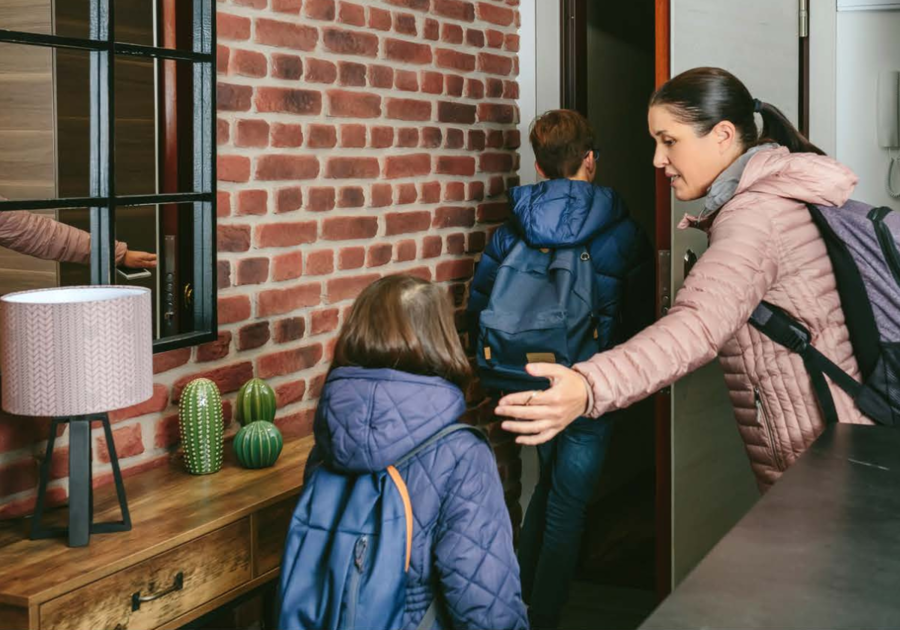Struggling to get your kids out the door? You’re not alone. By understanding their challenges, you can make it easier—and even fun. In this article, discover game-changing strategies to support their emotions, ease transitions, empower their choices, and turn outings into great memories. Learn how to encourage positive experiences, building their confidence and creating memories they'll treasure. Get ready to open the door to new adventures!
Understanding Their Hesitation
Before diving into solutions, it’s important to understand why your child might be hesitant to leave the house. Things like anxiety, shyness, uncertainty, or difficulty with transitions might be preventing your child from wanting to go. They might be tired and overwhelmed from schoolwork or after school activities.
So first, check in with your child about how they are feeling and why they might not want to go somewhere. As adults, we have a tendency to forget what it feels like to be a kid and all of the big emotions that come with it. You can support your child getting out in the world by supporting their emotional health. If your child is able to verbally express how they are feeling, encourage them to share and then validate and empathize. If they are feeling anxious, share an awareness of how hard it can feel to push through and do something you’re not sure you’re ready for. Name and reinforce the strengths you see in them and empower them to push through, letting them know that you will be there to support them! If they genuinely need the downtime or are stressed or overwhelmed, allow yourself and your child the flexibility to take some time to relax- whether it means for the day or a couple of hours- before heading out there to do something! Remember to show yourself and your child grace through the process.
Make It Fun
Children are more likely to participate in activities outside of the house if they view them as fun. Consider their interests and incorporate those into your plans. Whether it’s a scavenger hunt, a festival, or simply playing their favorite sport, tying activities to their passions can make the experience more enjoyable. Approach the activity with enthusiasm and excitement, emphasizing portions that you think your child will enjoy. Come with an inclusive and infectious energy- “I’m really looking forward to going to the festival with you! I heard they have face painting, I can’t wait to see what you pick out!”
Offer Choices
Empower your child by offering choices. Instead of saying, “We’re going to the park,” you might ask, “Would you prefer to go to the park or take a bike ride?” Or “do you want to go outside to do something now/today or later/tomorrow?” Giving your child a choice of activity or timeframe can help encourage buy-in and allow them to feel understood and supported.

Invite Friends
Sometimes, the presence of peers can make all the difference. Encourage your child to invite a friend along for activities. Knowing they have a buddy can ease their anxiety and make the experience more enjoyable.
Help with Transitions
Many times, the biggest difficulty of getting your child out of the house is literally getting them to leave the house. For smaller children, turning things into a race/playful game can help. See if you can race your child to the door or who can get ready faster! For older kids, offer to bring a desired item or snack for the car ride to the activity, or, let your children take turns choosing the music on the car ride there! Encourage them with something to look forward to when you get there. For kids who are really having a hard time leaving the house, give them a time frame you will be gone and something they can look forward to when they get back home.
Positive Reinforcement
Be encouraging and supportive of your child when you see them pushing through overwhelm or uncertainty. Reflect on and acknowledge efforts and successes. At the end of the outing, thank your child for coming out with and spending time with you and share something you genuinely enjoyed about the experience.
In Summary
Encouraging your children to get out of the house and engage with the world can significantly benefit their physical and mental well-being and development. By understanding their feelings, offering choices, and making the experience enjoyable, you can help them overcome their reluctance. With your support, they can learn to embrace new experiences out of the house, building confidence and creating lasting memories along the way!
—--
Written by Molly Sanders, MS, LPC:
Molly Sanders, MS, LPC, is a child and adult therapist at Kind Therapy, where she integrates Attachment Theory, Neuroscience, and Polyvagal Theory to support clients with navigating life transitions, depression, anxiety, parenting challenges, and complex trauma. Molly’s approach to child therapy sessions focuses on attunement, co-regulation, and empathy in caregiver-child interactions. Her therapy sessions are creative and child-centered, often incorporating play therapy to support children in overcoming emotional dysregulation and trauma. Molly believes in fostering resilience and connection with all of her clients, helping them build lasting connections and secure relationships. To learn more about working with Molly, or another therapist on our team, reach out to us at hello@kindtherapyllc.com.





